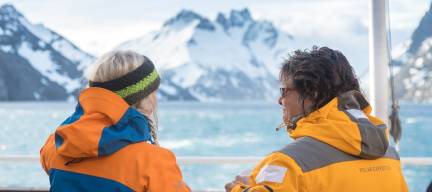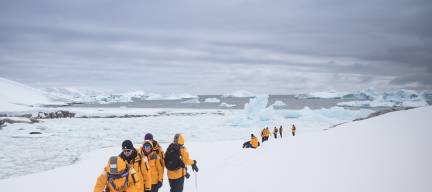The chance to see a polar bear in the wild is the highlight of an Arctic expedition. These powerful animals, roaming the ice and tundra of Svalbard, Greenland, and other northern regions, embody the raw beauty of the Arctic. But as interest in polar bear cruises grows, so does the responsibility to protect both travelers and wildlife.
In 2023, authorities in Svalbard introduced new minimum-distance regulations for polar bear encounters, setting clear guidelines for how close ships, Zodiacs, and travelers can approach these majestic predators. These rules aren’t just bureaucratic red tape—they are essential to ensuring safe, respectful, and ethical wildlife viewing.

Why the New Distance Rules Matter
Polar bears are apex predators, but they are also vulnerable. Climate change, melting sea ice, and shifting food sources already put stress on their populations. Disturbing them with human presence can add unnecessary pressure.
The updated rules in Svalbard require operators to maintain strict distance buffers. These guidelines, developed with input from the Association of Arctic Expedition Cruise Operators (AECO), are designed to ensure that bears can move naturally without feeling threatened. For travelers, this means that while you may need binoculars or a camera zoom lens, the encounter is far more authentic. You’re witnessing wildlife on its own terms, not staged for human entertainment.
On voyages with us, these regulations are treated as part of a larger commitment to responsible travel. Guests can still marvel at the sight of a polar bear hunting on the ice or swimming near the ship—but always at a distance that puts the animal’s welfare first.
One itinerary where polar bear sightings are possible is the Adventures in Northeast Greenland: Glaciers, Fjords and the Northern Lights expedition. Alongside breathtaking landscapes, guests may encounter Arctic wildlife in a way that aligns with both safety and conservation.

Balancing Safety and Respect
The new rules also protect travelers. Polar bears, while extraordinary to see, are unpredictable and potentially dangerous. By maintaining distance, expedition teams reduce risks without sacrificing the thrill of the experience.
Onboard experts—biologists, naturalists, and trained guides—help guests understand the context behind every sighting. When a polar bear appears, expedition leaders ensure that all viewing is compliant with regulations. For travelers, this creates peace of mind: you can focus on the wonder of the moment, knowing that safety and ethics are guiding the encounter.

The Role of Responsible Tourism
Ethical wildlife viewing is about more than following the rules—it’s about fostering respect. Polar bear cruises today are not just adventures; they are also opportunities to learn about conservation and the challenges facing Arctic wildlife.
Quark Expeditions incorporate educational programming into each journey, helping travelers understand how polar bears hunt, migrate, and survive in changing conditions. Guests return home not only with photos but with a deeper appreciation for why these rules matter.
For many travelers, this balance—seeing incredible wildlife while supporting conservation—is what makes an Arctic expedition so meaningful.
A Broader Arctic Wildlife Experience
Of course, polar bears aren’t the only animals travelers encounter. From walruses lounging on ice to whales surfacing alongside the ship, the Arctic is alive with species adapted to extreme conditions. The same ethical principles apply to all encounters: observe, respect, and avoid disturbance.
For travelers eager to experience a range of Arctic wildlife while following best practices, the Northwest Passage: Epic High Arctic expedition offers an unforgettable journey. This route combines the chance to see polar bears with other iconic species in one of the most storied regions of the polar world.

Planning Your Responsible Polar Bear Cruise
Travelers from the USA, Canada, and Australia often wonder whether distance rules diminish the excitement of seeing a polar bear. They enhance it. Watching a bear behave naturally—without interference—is far more rewarding than a forced close-up.
As with all Arctic wildlife encounters, patience and respect pay off. Following the new Svalbard rules ensures these animals can continue to thrive, while travelers still enjoy once-in-a-lifetime moments.
To learn more about itineraries that balance conservation, safety, and adventure, visit Quark Expeditions. Your journey promises unforgettable wildlife encounters that put the well-being of the Arctic front and center.









